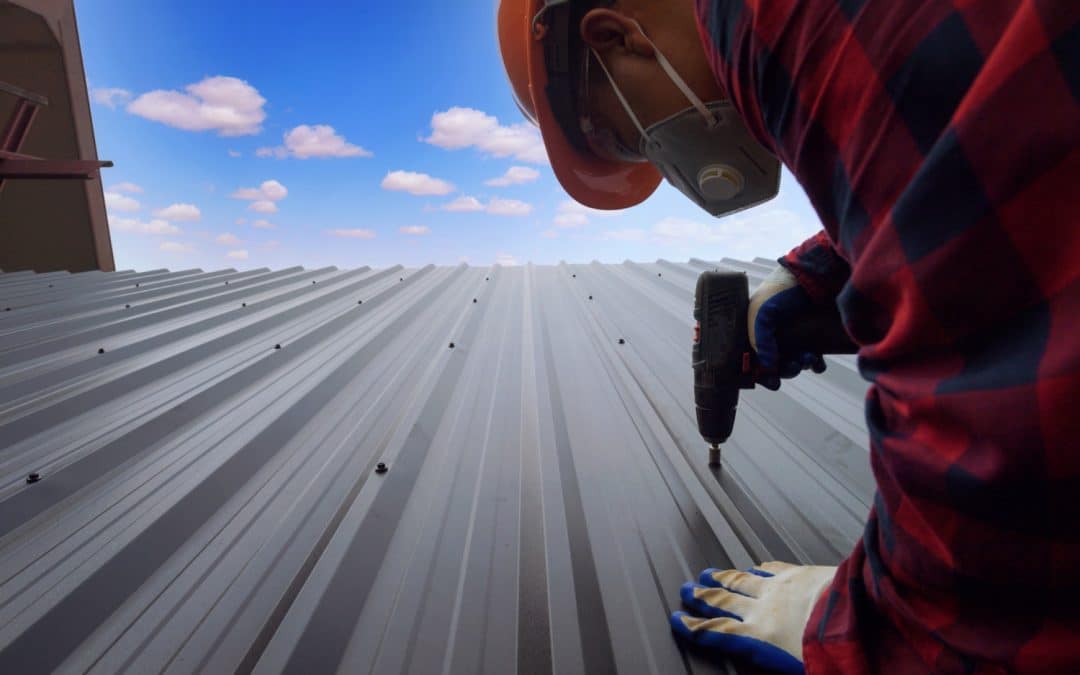TPO roofing is gaining popularity in commercial buildings due to its cost-effectiveness and energy-saving features. TPO, or Thermoplastic Olefin, is a single-ply roofing membrane made from durable polypropylene and ethylene-propylene rubber. Its versatility and affordability make it a favorite among many business owners looking for reliable roofing solutions.
One of the standout features of TPO roofing is its ability to reflect sunlight, lower heat absorption, and significantly reduce cooling costs. This ability to help maintain consistent indoor temperatures is a huge advantage for keeping utility bills in check. As companies strive for more sustainable practices, TPO’s environmental benefits, including the potential for recycling, are making it an attractive choice.
Understanding how TPO roofing can contribute to energy savings requires looking at its installation and maintenance as well as its financial perks. By investing in TPO roofing, businesses not only reduce energy costs but also support eco-friendly initiatives. This makes TPO a smart, sustainable choice for any commercial property looking to improve energy efficiency and lower operational costs.
What Is TPO Roofing?
TPO, or Thermoplastic Olefin, is a popular choice for commercial roofing due to its unique composition and beneficial features. It is a single-ply membrane made primarily from a blend of polypropylene and ethylene-propylene rubber. This makeup gives TPO its strength and flexibility, allowing it to withstand various weather conditions. Unlike some other roofing materials, TPO doesn’t contract or expand excessively, which helps prevent cracks and leaks over time.
TPO is favored for commercial buildings because of its durability and ease of installation. It comes in wide sheets that are heat-welded together, creating strong seams and a uniform surface. This method not only speeds up installation but also minimizes potential areas for water infiltration. Additionally, TPO is known for being mold- and puncture-resistant, adding to its appeal for businesses looking for a low-maintenance yet reliable roofing solution.
When comparing TPO with other materials like PVC or EPDM, several differences stand out. TPO generally offers better resistance to dirt accumulation and chemical exposure than EPDM. Compared to PVC, TPO is often more cost-effective while still providing similar levels of energy efficiency and durability. These advantages make it a popular choice for commercial properties that need a balance of affordability and performance.
How TPO Roofing Contributes to Energy Savings
One of the standout features of TPO roofing is its reflective properties. TPO membranes are usually white or light-colored, which helps them reflect more sunlight. This reflectivity plays a crucial role in temperature control, especially in large commercial buildings. By reflecting the sun’s rays, TPO roofs help keep indoor temperatures cooler, reducing the need for air conditioning during hot months.
The impact on HVAC systems and utility bills is significant. With TPO roofing, businesses often notice a drop in energy consumption. By maintaining a more constant indoor temperature, HVAC systems don’t have to work as hard, leading to lower cooling costs and less wear and tear on equipment. This can translate to substantial savings on monthly utility bills and maintenance expenses over time.
Beyond energy savings, TPO roofing also presents environmental benefits. Its reflective properties contribute to reducing the urban heat island effect, making it an eco-friendly choice. TPO is also a recyclable material, which means it generates less waste once it reaches the end of its life cycle. By choosing TPO, businesses not only save on energy and costs but also support more sustainable roofing practices.
Installation and Maintenance for Optimal Performance
Getting TPO roofing installed the right way is crucial for its performance. Proper installation starts with choosing the best materials and ensuring skilled professionals carry out the work. The installation involves precise alignment and securing of the TPO sheets using heat welding, which ensures watertight seams that prevent leaks. This is particularly important in areas with heavy rainfall or snowfall.
Routine maintenance plays a big role in keeping TPO roofs in good shape. Regular inspections can catch small issues before they become big problems. These inspections should focus on checking for punctures, tears, or any seam weaknesses. Cleaning the roofing surface to remove dirt and algae also helps maximize its reflective properties and efficiency.
Identify common issues early to avoid major repairs. Look for signs such as blistering or leaking. These can often be handled with simple patching if noticed in time. A trained roofer can help address these issues effectively, ensuring that your TPO roof remains functional and efficient for many years.
Financial Benefits of TPO Roofing
Investing in TPO roofing offers significant long-term cost savings. While the initial installation cost might seem high, the energy savings it provides soon balance it out. Lower energy bills resulting from its reflective surface and efficient insulation help return the investment over time. This makes TPO not just a smart roofing choice but an economically wise one.
Understanding incentives and rebates can further enhance financial benefits. Many regions offer rebates for installing energy-efficient roofing systems. Checking with local authorities or utility companies for available programs can add extra savings on your roofing investment.
Calculating return on investment helps gauge the value of TPO roofing. Consider both the immediate cost reductions and the extended lifespan of TPO. By focusing on durability and reduced energy expenses, TPO roofing ensures your building remains environmentally friendly while also protecting your bottom line.
Conclusion
TPO roofing stands out as a top choice for those looking to combine efficiency with environmental responsibility. Its energy-saving properties, along with durability and ease of maintenance, make it an ideal solution for commercial buildings. Choosing TPO roofing is a step towards a sustainable future that doesn’t compromise on functionality or design.
When thinking about your next roofing project, consider the many benefits TPO offers. By doing so, you’re investing in more than just a roof; you’re investing in the future of your business and the environment.
Looking to enhance your building with efficient and sustainable roofing? At Mike Huddleston Roofing Systems, we specialize in high-performance TPO roof installation. Give your business the protection it needs and see the difference in your energy savings. Contact us today to explore how TPO roofing can benefit your commercial property.

